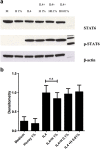Honey is potentially effective in the treatment of atopic dermatitis: Clinical and mechanistic studies
- PMID: 28474502
- PMCID: PMC5418133
- DOI: 10.1002/iid3.153
Honey is potentially effective in the treatment of atopic dermatitis: Clinical and mechanistic studies
Abstract
Introduction: As manuka honey (MH) exhibits immunoregulatory and anti-staphylococcal activities, we aimed to investigate if it could be effective in the treatment of atopic dermatitis (AD).
Methods: Adult volunteers with bilateral AD lesions were asked to apply MH on one site overnight for seven consecutive days and leave the contralateral site untreated as possible. Three Item Severity score was used to evaluate the response. Skin swabs were obtained from both sites before and after treatment to investigate the presence of staphylococci and enterotoxin production. In addition, the ability of MH and its methanolic and hexane extracts to down regulate IL4-induced CCL26 protein release from HaCaT cells was evaluated by enzyme linked immunosorbent assay. Also, the ability of MH to modulate calcium ionophore-induced mast cell degranulation was assessed by enzyme immunoassay.
Results: In 14 patients, AD lesions significantly improved post MH treatment versus pre-treatment as compared to control lesions. No significant changes in the skin staphylococci were observed after day 7, irrespective of honey treatment. Consistent with the clinical observation, MH significantly down regulated IL4-induced CCL26 release from HaCaT cells in a dose-dependent manner. This effect was partially lost, though remained significant, when methanolic and hexane extracts of MH were utilized. In addition, mast cell degranulation was significantly inhibited following treatment with MH.
Conclusions: MH is potentially effective in the treatment of AD lesions based on both clinical and cellular studies through different mechanisms. This needs to be confirmed by randomized and controlled clinical trials.
Keywords: Atopic dermatitis; honey; keratinocytes; manuka; mast cells.
© 2017 The Authors. Immunity, Inflammation and Disease Published by John Wiley & Sons Ltd.
Figures






References
-
- Kwakman, P. H. S. , Van den Akker J. P. C., Güçlü A., Aslami H., Binnekade J. M., de Boer L., Boszhard L., Paulus F., Middelhoek P., te Velde A.A., et al. 2008. Medical‐grade honey kills antibiotic‐resistant bacteria in vitro and eradicates skin colonization. Clin. Infect. Dis. 46(11):1677–1682. - PubMed
-
- Maddocks, S. E. , Jenkins R. E., Rowlands R. S., Purdy K. J., and Cooper R. A.. 2013. Manuka honey inhibits adhesion and invasion of medically important wound bacteria in vitro. Future Microbiol. Future Medicine Ltd London, UK; 8(12):1523–1536. - PubMed
-
- Lee, D. S. , Sinno S., and Khachemoune A.. 2011. Honey and wound healing: an overview. Am. J. Clin. Dermatol. 12(3):181–190. - PubMed
-
- Jenkins, R. , Burton N., and Cooper R.. 2011. Manuka honey inhibits cell division in methicillin‐resistant Staphylococcus aureus . J. Antimicrob. Chemother. Oxford University Press; 66(11):2536–2542. - PubMed
Publication types
MeSH terms
Substances
LinkOut - more resources
Full Text Sources
Other Literature Sources
Research Materials

